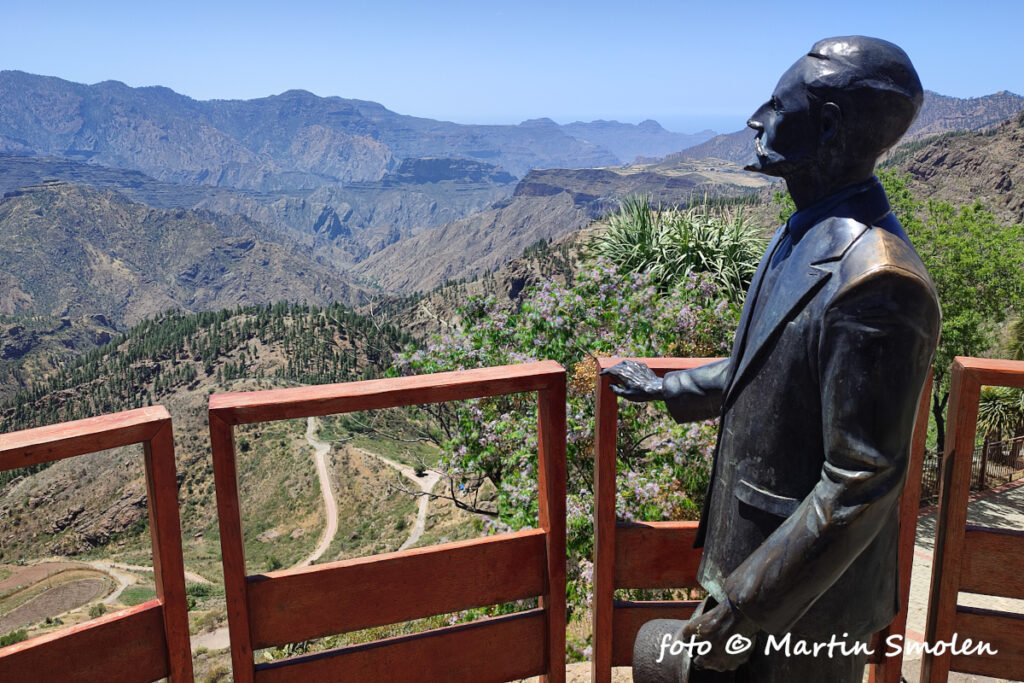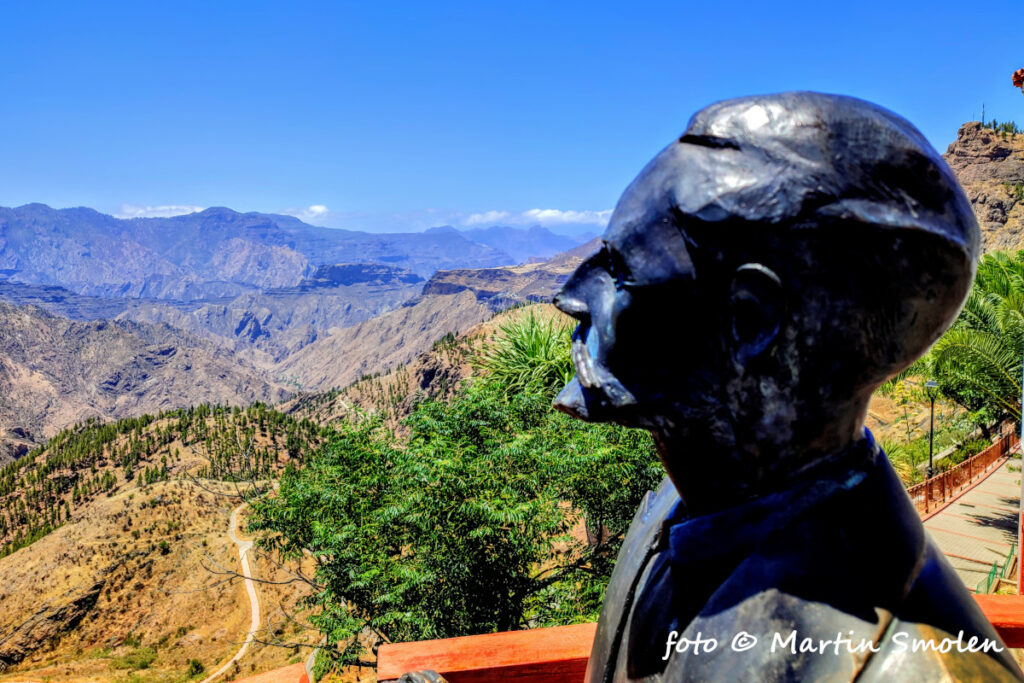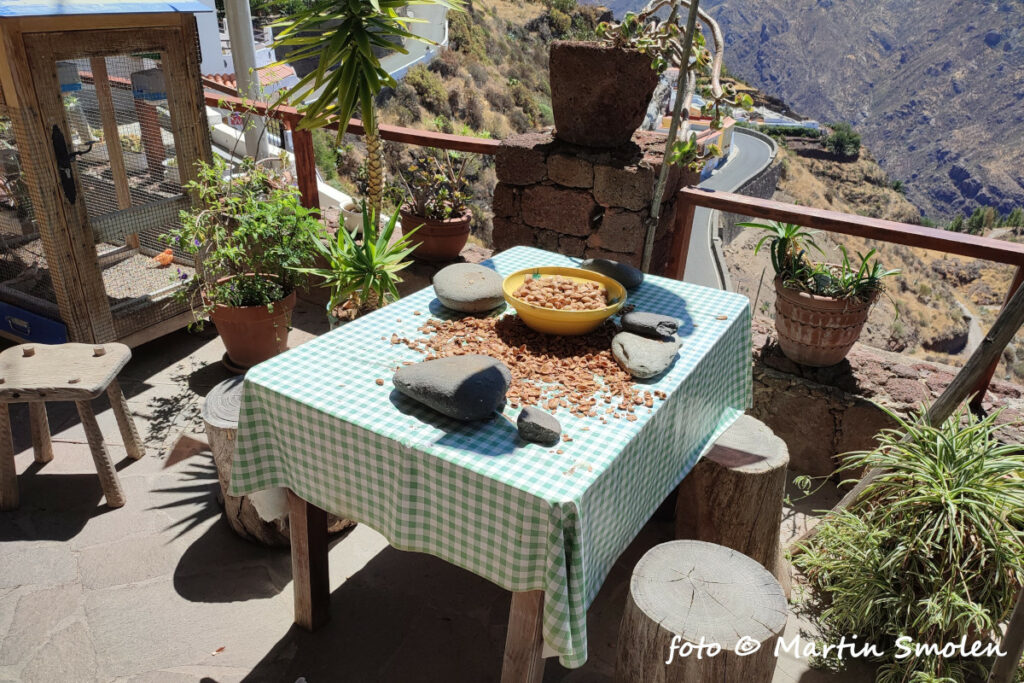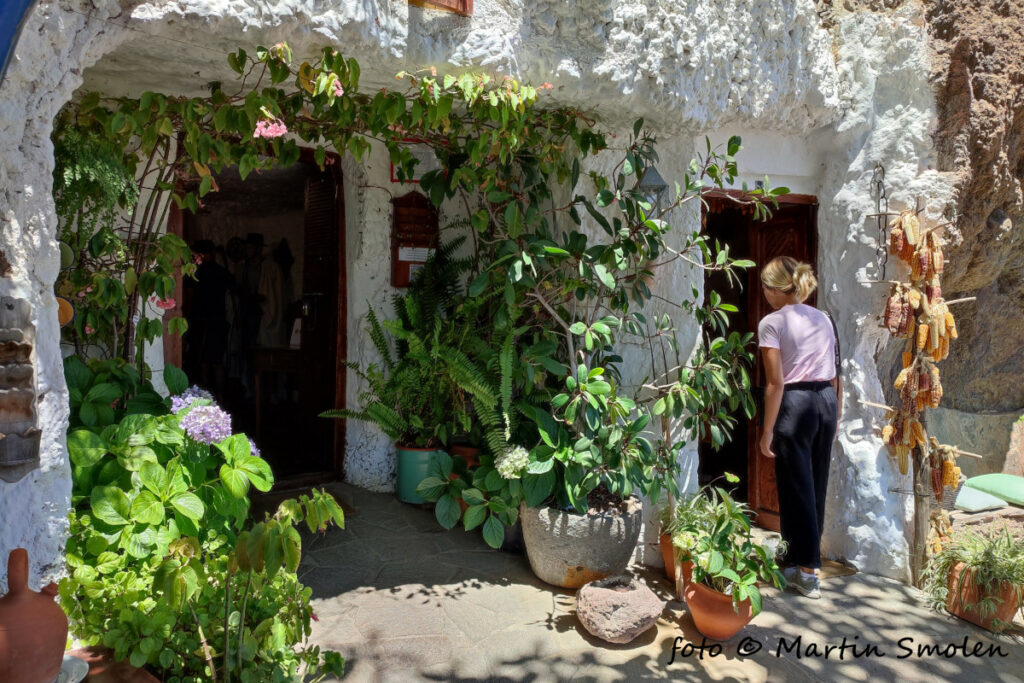There is a monument in the mountain town of Artenara, which is also a beautiful view of the Tejeda caldera. The monument symbolizes the Spanish writer and philosopher of Generation ’98 Miguel de Unamuno. He spent a month in Gran Canaria in 1910 and got to know the beauty of the landscape that the island has to offer.
Miguel de Unamuno y Jugo was born on September 29, 1864 in Bilbao, died on December 31, 1936 in Salamanca. In his work you will find a wide range of literary genres, novels, essays, plays and poetry. He was also a member of the Spanish Parliament. From 1901 he was rector and professor of the history of the Spanish language at the University of Salamanca. His career was only ended by the civil war, when he was removed from office and imprisoned for several months for his views.

Miguel de Unamuno in Gran Canaria
On June 22, 1910, Miguel de Unamuno arrived in the capital city of Las Palmas as a guest at the first Flower Games (literary competition). During the month he was in Gran Canaria, Unamuno came into contact with Canarian intellectuals and writers of the time. However, he left the theater booed. The reason for this was none other than his rejection of the creation of the province of Las Palmas, which at that time – when there was only one province in the Canary Islands, based in Santa Cruz de Tenerife – was a request of the society of the eastern islands.

Unamuno then made another speech in which he apologized to the company and, in order to “pacify” the people, he decided to explore the interior of Gran Canaria. He left the main road towards Teror, a town which, he wrote in his book Through the Lands of Portugal and Spain, reminded him of some towns in the Portuguese Minho. From there he headed towards the peaks of the island. It passed through Valleseco, climbed the Camino Real, passed through Degollada de Las Palomas and continued along the entire northern rim of the Tejeda Caldera to Artenara. The landscape so impressed him that his description of the interior is perhaps the best way to express what the immensity of Gran Canaria evokes in visitors.

“The spectacle is impressive. All those black walls of the great caldera, with their crests that look like battlements, with their upright rocks, offer the appearance of a Dantesque vision. The cauldrons of hell that the Florentines visited could not be anything else. It’s a huge commotion from the bowels of the earth. Everything seems like a petrified storm, but a storm of fire and lava, not water. They were indeed views that seemed to lift me out of the narrow confines within which I moved to the sun, rising from among the clouds. It seemed to be suspended in the sky in such a way that the sea of mist covered and protected the sea of water.”

A visit to the town of Artenara
including a lookout in the company of Miguel de Unamuno, is part of a full-day trip organized by Gran Canaria Travel to the center of the island. ( https://grancanariatravel.es/tour/road-to-the-clouds/ ) It also includes a visit to the cave dwellings, which he also described in his book Through the Lands of Portugal and Spain as follows: “Those caves, some of which once served as dens for the Guanches , who lived in caves and where the inhabitants of Artenara live today, are carefully whitewashed and offer comfort.”

Did you like this article, was it useful to you? You can also support the creation of this website by sending any amount to ES08 0049 5735 1122 1616 5370, swift BSCHESMM. Include “Canaria Guide Support” in the note. Thank you for supporting.


